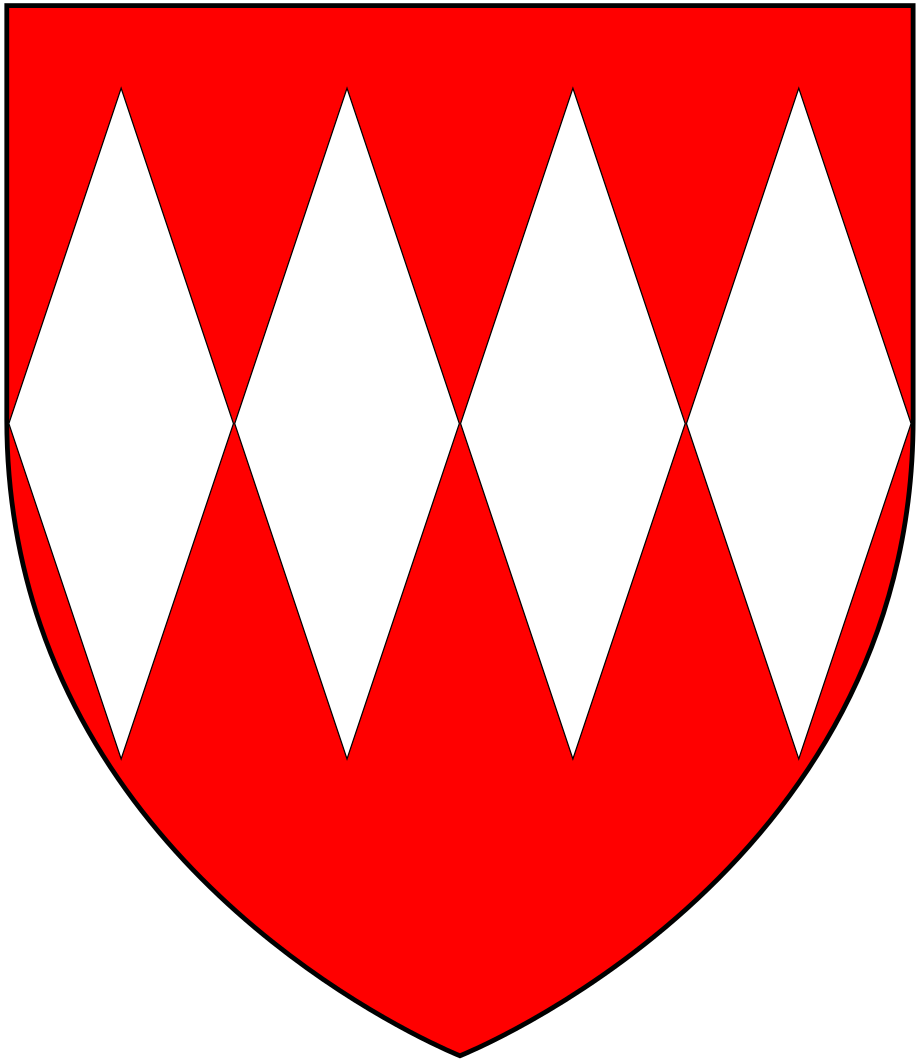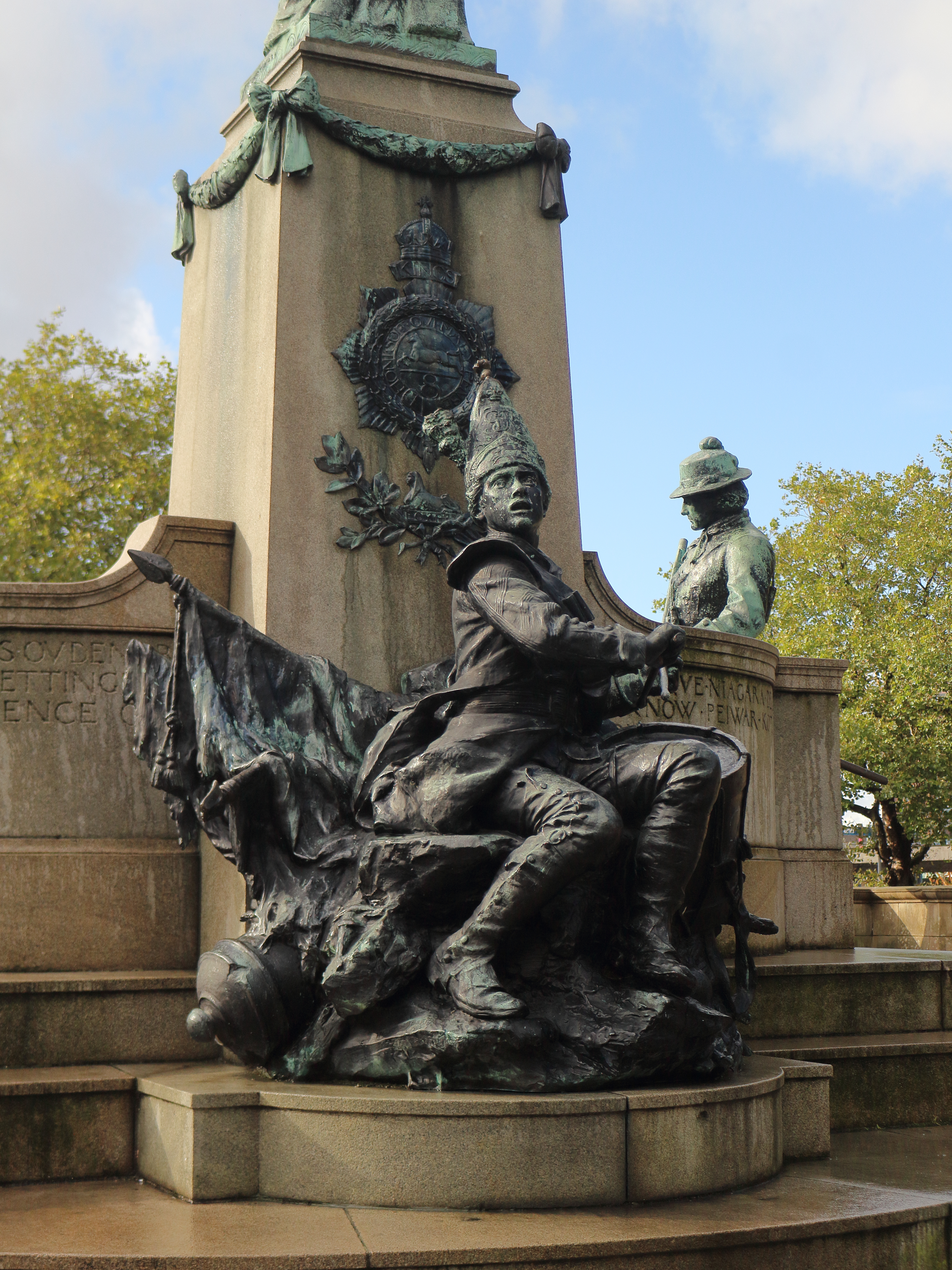|
Haynes Park
Haynes Park is a Georgian country house which stands in parkland at Haynes Church End, Bedfordshire, England. It is a Grade I listed building. Originally known as Hawnes Park it was built c.1725 for John Carteret, 2nd Earl Granville, a prominent statesman and remodelled and expanded several times since by his descendants. It is constructed of red and white brick to a square plan in two storeys with attics and slate roofs. Later extensions formed a courtyard. The south front has 13 bays in a 3-7-3 formation surmounted by a parapet, the two outer bays projecting in 2-storey bows. It stands in an estate which today comprises some 800 acres (320ha) of parkland and woodland. The estate passed down to John Thynne, 3rd Baron Carteret, who died childless, leaving it to his nephew Lord John Thynne, sub-Dean of Westminster, thence to his eldest son Francis John Thynne, who was lord of the manors of Kilkhampton, Stratton and Binhamy in Cornwall. Stowe House in Kilkhampton, Cornwall, had ... [...More Info...] [...Related Items...] OR: [Wikipedia] [Google] [Baidu] |
Clarendon School For Girls
Clarendon School for Girls was a girls' independent boarding school, which began in 1898 in Malvern, Worcestershire, England. It moved three times: first to Kinmel Hall near Abergele in Denbighshire in 1948 and then to Haynes Park in Bedfordshire in 1976 before merging with Monkton Combe School, near Bath, Somerset in 1992. History Clarendon School was established in a private house in North Malvern, Worcestershire in 1898 by Miss Amy Flint (1869-1941), assisted by her sisters Mary, Annie and Kate. The first pupils were seven boarders aged between six and sixteen. The Misses Flint were the daughters of an Evangelical Christian travelling preacher and embedded their strong Christian values and ethos in the day-to-day operation of their new school. Miss Amy Flint remained as headmistress of Clarendon School until her retirement in 1930, when the school had grown to contain forty-six pupils and occupy several more houses in the village. During World War II, numbers grew to s ... [...More Info...] [...Related Items...] OR: [Wikipedia] [Google] [Baidu] |
English Country House
An English country house is a large house or mansion in the English countryside. Such houses were often owned by individuals who also owned a town house. This allowed them to spend time in the country and in the city—hence, for these people, the term distinguished between town and country. However, the term also encompasses houses that were, and often still are, the full-time residence for the landed gentry who ruled rural Britain until the Reform Act 1832. Frequently, the formal business of the counties was transacted in these country houses, having functional antecedents in manor houses. With large numbers of indoor and outdoor staff, country houses were important as places of employment for many rural communities. In turn, until the agricultural depressions of the 1870s, the estates, of which country houses were the hub, provided their owners with incomes. However, the late 19th and early 20th centuries were the swansong of the traditional English country house lifest ... [...More Info...] [...Related Items...] OR: [Wikipedia] [Google] [Baidu] |
William Granville, 3rd Earl Of Bath
William Henry Granville, 3rd Earl of Bath (30 January 1692 – 17 May 1711) was an English nobleman. Origins He was the only son of Charles Granville, 2nd Earl of Bath, by his second wife Isabella de Nassau d'Auverquerque, sister of Henry de Nassau d'Auverquerque, 1st Earl of Grantham. Career He was styled Viscount Lansdown from August to September 1701, when he succeeded in the earldom after his father committed suicide, allegedly because of the debts he had inherited. Death Lord Bath died of smallpox in May 1711, aged 19, when the earldom became extinct. References {{DEFAULTSORT:Bath, William Granville, 3rd Earl of 1692 births 1711 deaths Deaths from smallpox 3 William William is a male given name of Germanic origin.Hanks, Hardcastle and Hodges, ''Oxford Dictionary of First Names'', Oxford University Press, 2nd edition, , p. 276. It became very popular in the English language after the Norman conquest of Engl ... Infectious disease deaths in England ... [...More Info...] [...Related Items...] OR: [Wikipedia] [Google] [Baidu] |
Radha Soami Satsang Beas
Radha Soami Satsang Beas (RSSB) is a spiritual organization in Radha Soami movement. It is headed by Gurinder Singh. The main centre of RSSB is located on the banks of the Beas River in the northern Indian state of Punjab. Establishment of the Dera at Beas RSSB was founded in India in 1891 by Jaimal Singh. Shiv Dayal Singh gave initiation to Baba Jaimal Singh in 1856, who then started meditating for many days on the bank of river Beas. He, then, started giving initiation to the people there in 1889 after he got retired from his job. Lineage The lineage of the spiritual heads at RSSB is as follows:- * Jaimal Singh - 1889-1903 * Sawan Singh - 1903-1948 * Jagat Singh - 1948-1951 * Charan Singh - 1951-1990 * Gurinder Singh Gurinder Singh Dhillon, also known as Baba Ji to his followers, is the spiritual head of Radha Soami Satsang Beas (RSSB). He succeeded Maharaj Charan Singh, his uncle, in 1990. The headquarters of this spiritual community, called Dera Baba J ... - ... [...More Info...] [...Related Items...] OR: [Wikipedia] [Google] [Baidu] |
Bath, Somerset
Bath () is a city in the Bath and North East Somerset unitary area in the county of Somerset, England, known for and named after its Roman-built baths. At the 2021 Census, the population was 101,557. Bath is in the valley of the River Avon, west of London and southeast of Bristol. The city became a World Heritage Site in 1987, and was later added to the transnational World Heritage Site known as the "Great Spa Towns of Europe" in 2021. Bath is also the largest city and settlement in Somerset. The city became a spa with the Latin name ' ("the waters of Sulis") 60 AD when the Romans built baths and a temple in the valley of the River Avon, although hot springs were known even before then. Bath Abbey was founded in the 7th century and became a religious centre; the building was rebuilt in the 12th and 16th centuries. In the 17th century, claims were made for the curative properties of water from the springs, and Bath became popular as a spa town in the Georgian era. ... [...More Info...] [...Related Items...] OR: [Wikipedia] [Google] [Baidu] |
Monkton Combe School
(Thy Word is Truth) , established = , type = Public schoolIndependent schoolBoarding school , founder = The Revd Francis Pocock , head_label = Head Master , head = Christopher Wheeler (Senior School), Catherine Winchcombe (Prep School) , colours = Red, white, blue , enrolment = 711 (all three schools from September 2015) , gender = Coeducational , lower_age = 2 , upper_age = 18 , city = Monkton Combe, near Bath , county = Somerset , country = England , postcode = BA2 7HG , faculty = , free_label_1 = Former pupils , free_1 = Old Monktonians , free_text = , information = , houses = Eddystone (MSS Boys) Farm (MSS Boys) Grange (MSS Gir ... [...More Info...] [...Related Items...] OR: [Wikipedia] [Google] [Baidu] |
Abergele
Abergele (; ; ) is a market town and community, situated on the north coast of Wales between the holiday resorts of Colwyn Bay and Rhyl, in Conwy County Borough and in the historic county of Denbighshire. Its northern suburb of Pensarn lies on the Irish Sea coast. Abergele and Pensarn railway station serves both resorts. Abergele is often overlooked due to the popularity of towns in nearby Rhyl, Prestatyn, Colwyn Bay, Llandudno and Conwy. Only 46.5% of the population was born in Wales as of the 2011 census. Etymology The meaning of the name can be deduced by being the Welsh word for estuary, river mouth or confluence and the name of the river which flows through the town. is a dialectal form of , which means spear, describing the action of the river cutting through the land. It has also been suggested this river is named because its waters flash brightly. Abergele is often mispronounced as ah-bear-geh-lee by non-native Welsh speakers. Geography The town itself lies ... [...More Info...] [...Related Items...] OR: [Wikipedia] [Google] [Baidu] |
Sir George Carteret, 1st Baronet
Vice Admiral Sir George Carteret, 1st Baronet ( – 14 January 1680 N.S.) was a royalist statesman in Jersey and England, who served in the Clarendon Ministry as Treasurer of the Navy. He was also one of the original lords proprietor of the former British colony of Carolina and New Jersey. Carteret, New Jersey, as well as Carteret County, North Carolina, both in the United States, are named after him. He acquired the manor of Haynes, Bedfordshire, (''alias'' Hawnes) in about 1667. Early life Carteret was the son of Elias de Carteret and Elizabeth Dumaresq of Jersey, who both died in 1640. Elias was the son of Philippe de Carteret I, 2nd Seigneur of Sark. With the help of his Uncle Philippe de Carteret II, 3rd Seigneur of Sark George was able to gain a position in the Royal Navy (George dropped the "de" from his surname when he entered the English navy, concerned that it sounded too French). George was "bred for the sea" and served as an officer in various naval ships, bei ... [...More Info...] [...Related Items...] OR: [Wikipedia] [Google] [Baidu] |
Beechwood Park (mansion)
Beechwood Park was a mansion, near Markyate, Hertfordshire, England. It now houses Beechwood Park School. History Ralph de Tony held this site, in the manor of Flamstead, as recorded in the ''Domesday Book'' of 1086. As King of England, William the Conqueror would have expected this new Lord of the Manor to protect St Albans Abbey and its pilgrims. Ralph de Tony's grandson Roger IV de Toesny then founded a Benedictine nunnery, St Giles in the Wood Priory, Flamstead, in the middle of the 12th century.British History Online . The Dissolution of the Monasteries resulted in the destruction of the nunnery of St Giles in 1537. The Manor House on the site was used frequently by < ... [...More Info...] [...Related Items...] OR: [Wikipedia] [Google] [Baidu] |
Goscombe John
Sir William Goscombe John (21 February 1860 – 15 December 1952) was a prolific Welsh sculptor known for his many public memorials. As a sculptor, John developed a distinctive style of his own while respecting classical traditions and forms of sculpture. He gained national attention with statues of eminent Victorians in London and Cardiff and subsequently, after both the Second Boer War and World War I, created a large number of war memorials. These included the two large group works, '' The Response 1914'' in Newcastle upon Tyne and the Port Sunlight War Memorial which are considered the finest sculptural ensembles on any British monument. Although as a young man he adopted the first name Goscombe, taken from the name of a village in Gloucestershire near his mother's home, he was actively engaged with his native Wales and Welsh culture throughout his career. Biography Early life and career John was born in the Canton area of Cardiff, to Thomas John, a wood carver from Llan ... [...More Info...] [...Related Items...] OR: [Wikipedia] [Google] [Baidu] |
Thomas Thynne, 2nd Marquess Of Bath
Thomas Thynne, 2nd Marquess of Bath KG (25 January 1765 – 27 March 1837), styled Viscount Weymouth from 1789 until 1796, was a British peer. Life Early life Thynne was the eldest son of Thomas Thynne, 1st Marquess of Bath, and Lady Elizabeth Cavendish-Bentinck. He succeeded as 2nd Marquess in 1796 on the death of his father. He was educated at Winchester College and admitted as a nobleman to St John's College, Cambridge in 1785, graduating M.A. in 1787. Political career Between 1786 and 1790, he was MP (Tory) for Weobley. He later sat for Bath from 1790 to 1796. He was Lord Lieutenant of Somerset between 1819 and 1837 and was invested as a Knight of the Garter on 16 July 1823. Later life and death He was a benefactor in the nearby town of Frome, giving up land and buildings so that a new wide road could be created leading south from the town centre, now called Bath Street. On another occasion he set aside land for allotments for a hundred families. "I have been tol ... [...More Info...] [...Related Items...] OR: [Wikipedia] [Google] [Baidu] |
George Carteret, 1st Baron Carteret
George Carteret, 1st Baron Carteret (July 1667 – 22 September 1695) was son of Sir Philip Carteret (died 1672) and the grandson of Vice Admiral Sir George Carteret, 1st Baronet (died 1680). His mother was Lady Jemima Montagu, a daughter of Edward Montagu, 1st Earl of Sandwich. He was left an orphan at the age of five, and was brought up by his grandmother Elizabeth de Carteret, a daughter of Philippe de Carteret II, 3rd Seigneur de Sark, whom Samuel Pepys called "the most kind lady in the world".C. H. Firth, "Carteret, Sir George, first baronet (1610?–1680" in Oxford Dictionary of National Biography (OUP, 2004) In 1681, when Carteret was fourteen, King Charles II created him Baron Carteret, of Hawnes, in recognition of his late grandfather's outstanding loyalty to the House of Stuart, both during the English Civil Wars and after the Restoration. Carteret married Lady Grace Granville, a daughter of John Granville, 1st Earl of Bath John Granville, 1st Earl of Bath PC, ... [...More Info...] [...Related Items...] OR: [Wikipedia] [Google] [Baidu] |
.jpg)






